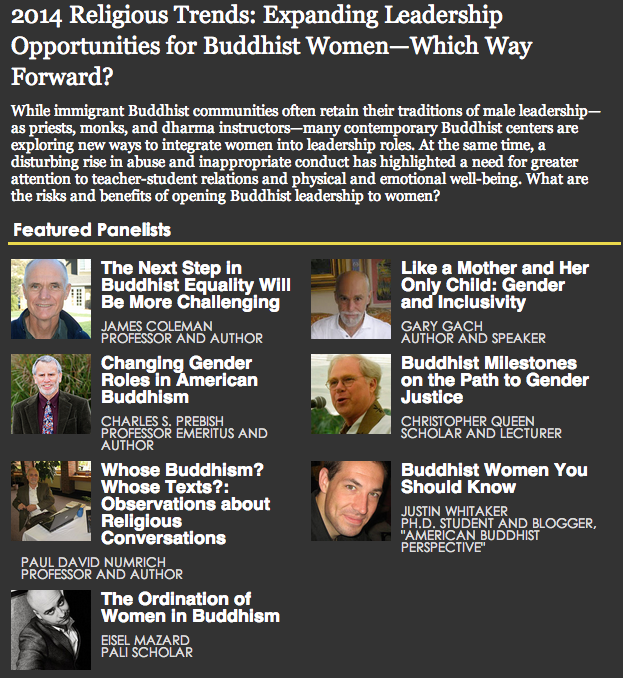Some weeks back, Texas Senator Wendy Davis did an incredibly brave thing by filibustering (for an amazing ten-plus-hours) Senate Bill 5, a piece of legislation meant to create new abortion regulations in the state. This not only brought attention to dangerous restrictions on women’s reproductive rights (and attempts at more) in Texas and elsewhere, but has since proven to be a flashpoint in the “war on women.”
Following Davis’ filibuster, Texas Governor Rick Perry, who can always be counted on to say things of truly stunning ridiculousness, and who supported the bill (which was eventually passed), made statements that could be interpreted a few ways, but which certainly seemed to be a muddled and paternalistic attempt to embarrass her. Perry brought up the fact that Davis was a teenage mother, saying, “It is just unfortunate that she hasn’t learned from her own example that every life must be given a chance to realize its full potential and that every life matters.” Writing about the remarks for Slate, Jeremy Stahl noted that the remarks could be interpreted as “slut-shaming”.
Then, this week, news broke that a Republican lawmaker has suggested punishing Davis for her filibuster by having her pick up part of the tab (around $800,ooo of the total $2.4 million) for the Texas Legislature’s special, three-day session. Rep. Giovanni Capriglione of Texas was quoted as saying:
I think we need to remember why we are having this extra special session. One state senator, in an effort to capture national attention, forced this special session… I firmly believe that Sen. Wendy Davis should reimburse the taxpayers for the entire cost of the second special session. I am sure that she has raised enough money at her Washington, D.C., fundraiser to cover the cost.
To me, anyway, the message here is clear enough: if you’re an outspoken women who disagrees with the menfolk, you’ll pay for it — literally. (Rep. Capriglione has not yet called for Rand Paul, Kentucky’s male senator, to pick up any checks for his twelve-plus-hour filibuster of John Brennan’s nomination for CIA director…)
Texas is by no means the only state that has seen new legislation around reproductive health and rights, nor the only seeing verbal broadsides in the war on women. In a recent piece for the Huffington Post that looks at draconian laws in Texas, North Carolina, and Colorado specifically, Karen Middleton, the Executive Director of NARAL Pro-Choice Colorado, notes findings in a new report from the Guttmacher Institute:
In the first six months of this year, state legislatures have already enacted 106 provisions related to reproductive health and rights. That includes 43 provisions restricting abortion access — as many as were enacted during the entire year in 2012.
Like the debate in Texas, all of these provisions come along with public statements from some of our leaders that have troubling implications for the rights of women.
Regardless of one’s opinion about abortion, there’s nothing like the debate about it to bring out the worst sexist, misogynistic, and patriarchal behaviors, tendencies, and sentiments in our culture. No matter where you are on the issue, I think it would be profoundly naïve not to acknowledge how things would and might be different if the shoe were on the other foot; as Gloria Steinem once famously said, “If a man could get pregnant, abortion would be a sacrament.”
In her piece for The Guardian entitled “Understanding ‘God’s War’ Against Abortion and Wendy Davis in Texas”, the marvelous religion journalist Sarah Posner does a great service by helping us all understand the mindset of many of the most vehement religious voices in the war on women. She writes:
The religious activists who call on [Rick Perry] to ram anti-choice bills through the [Texas state] legislature view politics as a battle between good and evil. They believe they are on a mission from God to battle Satanic forces…that will destroy America with abortion and LBGT equality… Perry described his mission as “bigger than any law or policy,” of being engaged in a struggle not of “flesh and blood,” but “against the rulers, against the authorities, against the powers of this dark world and against the spiritual forces of evil in the heavenly realms”… The war on women is a powerful motivating force for supporters of reproductive rights. They should be clear-eyed, though, about the realities of what motivates their opponents.
As someone who finds the war on women completely unacceptable, and is gravely concerned about violence against women in the U.S. and around the world, I personally find that another part of being both “clear-eyed” (as well as an effective ally) is first looking at our own behavior, and in our backyard, to see where things can be improved. So I’d like to take some time here to highlight the work of an excellent scholar who has given us as Buddhists an opportunity to see where we’ve un/consciously participated in the war on women as part of our own discourse about reproductive matters.
The scholar is the University of Toronto’s Frances Garrett, and the book is her superbly executed 2008 volume Religion, Medicine and the Human Embryo in Tibet. Not only is it fascinating and impressive in its own right as a work of Tibetan Buddhist Studies, but it is also a vital contribution to a few other subject areas of interest, including “Buddhism and medical ethics” and “women and Buddhism.” In examining Tibetan esoteric texts that were especially important between the twelfth to fifteenth centuries and discuss pregnancy and gestation, as well as work by Tibetan physicians, the author finds herself asking the questions, “Is it surprising to find data on embryology in an esoteric religious treatise?” and “What was religion in the history of Tibet, if its treatises addressed conception, pregnancy and fetal growth?”
At the outset of the book, Garrett walks readers through the relationships between science, religion, and medicine in European thought, and then in Buddhism broadly speaking. She discusses “narratives of embryology” as literature and historical phenomena, and also what these narratives have to tell us about “medical epistemology.” She goes on to look specifically at theories of human development in traditional Indian sources, in Indian Nikāya and Mahāyāna Buddhism, in Indian Vajrayāna Buddhism, and in the Chinese traditions. Especially valuable here is Garrett’s treatment of how this philosophical and religious “inheritance” was adapted and transformed for Tibetan Buddhists own unique purposes. She focuses on the various nuances that must be considered when approaching the intersection of medicine and religion in Tibet as well, including matters historiographic, literary, and scholastic. The author here is also careful to note that medicine and religion are more distinct areas in Tibetan culture than we sometimes realize. “Medicine and religion in Tibet, despite a close interaction throughout history, are — or became at some point — disciplines and genres of literature with separate identities,” she points out. “Organized in the fourteenth century, the Tibetan Buddhist canon places medical texts under a category of technical treatises and, until the seventeenth century, medicine was taught in monasteries as one of the worldly arts and sciences.”
Garrett continues by exploring what Tibetan Buddhism’s inherited traditions have to tell us in terms of thinking about the human body, especially with regard to gender. “It is well known that Buddhist theorists have generated tomes of scholarship on the classification and functions of various aspects of mind or mentality — a topic clearly separate in Buddhism from the study of the body,” she writes. “But narratives of gestation are, on the most literal level, explicitly focused on the development of the body, not the mind. What is it that this topic allowed Tibetan writers to say about the body?” From the inherited traditions, Garrett moves on to focus on select Tibetan commentarial literature. Of special note is what the author observes as a major break that the principally important Tibetan medical source Four Tantras (Rgyud Bzhi) makes from Vāgbhaṭa’s particularly influential Indian text Heart of Medicine (Astāngahrdayasamhitā): “…Ordinary care for the woman during pregnancy and delivery, and even any significant observation of her experience of pregnancy, is simply not part of Tibetan medical accounts of fetal development.”
What this seems to tell us, in Garrett’s view, is that the topic of embryology simply allowed Tibetan writers to talk about human development from conception, but that things beyond that — even the experience of pregnant women and her symbiotic relationship to the fetus — was of little to no interest. Or, in the author’s words, “women’s reproductive physiologies were simply the raw material in which humans were incubated, and while the pathological experience of problematic pregnancies were addressed elsewhere in medical literature, the liberative motifs that were part of many Tibetan embryological narratives did not exist for the pregnant woman.”
Garrett’s findings deepen with the observation of how embryology served Tibetan writers by giving them another useful avenue to discuss matters of great importance to them. She considers “gestation and the religious path,” as well as the ways in which “embryology is about becoming as much as being.” If embryology gave Tibetan authors the opportunity to talk about development, it also gave them new opportunities to wax poetic about the Buddhadharma as well. “In renaissance Tibet, one of the most widespread topics of writing was the religious path, and gestation turned theorizers of the path perfectly,” Garrett writes. “When the exoteric path teaches suffering, gestation is about suffering. When the esoteric path teaches liberation through bodily practices, gestation is about rebirth into an enlightened body.”
So, to sum up, the big takeaway from Religion, Medicine and the Human Embryo in Tibet for me was the observation that, astoundingly, the experiences of pregnant women do not really play into Tibetan embryology at all, and women are seen as little other than the “raw material in which humans were incubated.” Though Garrett’s book focuses squarely on the Tibetan Buddhism, this observation seems generally true of Buddhist thought about embryos across the board. I’ll spare readers a sum-up of the various Buddhist positions on abortion, but will recommend the work of Peter Harvey and Damien Keown on Buddhist ethics, as well as this article and this web resource from the BBC for the uninitiated. Looking at much of thought from all the major Buddhist traditions, I think we see much the same thing that Garrett has found in the Tibetan tradition specifically. Look at the BBC page I just mentioned, for example: for as much text is there — quoted scripture, as well as explication — the word “mother” is used twice, and “woman” only once.
Again, regardless of our position on abortion, as we all move forward, we do well to look carefully at the ways our suggested actions — and even our rhetoric — marginalize, oppress, or otherwise do harm to women. For our part as Buddhists, I think we would do well to come to terms with the fact that we’ve often been very, very far from thoughtful about the experiences of women, even when considering things like embryology. This must change. It’s up to us to change, and the time has long since come to do that.












